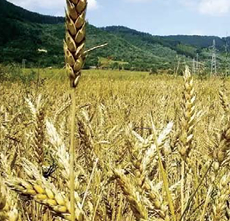How Russia invasion of Ukraine affects Africa’s food supplies
No man qualifies as a statesman who is entirely ignorant of the problems of wheat. The words of the ancient Greek philosopher, Socrates
 Wheat and other grains are back at the heart of geopolitics following Russia’s invasion of Ukraine. Both countries play a major role in the global agricultural market.
Wheat and other grains are back at the heart of geopolitics following Russia’s invasion of Ukraine. Both countries play a major role in the global agricultural market.
There is significant agricultural trade between countries on the continent and Russia and Ukraine. African countries imported agricultural products worth $4 billion from Russia in 2020. About 90 percent of this was wheat, and six percent was sunflower oil.
Major importing countries were Egypt, which accounted for nearly half of the imports, followed by Sudan, Nigeria, Tanzania, Algeria, Kenya and South Africa.
Similarly, Ukraine exported $2.9 billion worth of agricultural products to the African continent in 2020. About 48 percent of this was wheat, 31 percent maize, and the rest included sunflower oil, barley, and soybeans.
Russia and Ukraine are substantial players in the global commodities market. Russia produces about 10 percent of global wheat while Ukraine accounts for four percent. Combined, this is nearly the size of the European Union’s total wheat production. Wheat is for domestic consumption as well as export markets.
Together the two countries account for a quarter of global wheat exports. In 2020 Russia accounted for 18 percent, and Ukraine eight percent.
Both countries are also notable players in maize, responsible for a combined maize production of four percent. However, Ukraine and Russia’s contribution is even more significant in exports, accounting for 14 percent of global maize exports in 2020.
The two countries are also among the leading producers and exporters of sunflower oil. In 2020, Ukraine’s sunflower oil exports accounted for 40 percent of global exports, with Russia accounting for 18 percent of global sunflower oil exports.
Supplies
Russia’s military action has caused panic among some analysts. The fear is that intensifying conflict could disrupt trade with significant consequences for global food stability.
This is likely to result in big rises in the price of global grains and oilseed, which have been among the key drivers of global food price increases since 2020. This has been primarily because of dry weather conditions in South America and Indonesia that resulted in poor harvests combined with rising demand in China and India.
Disruption in trade, because of the invasion, in the significant producing region of the Black Sea would add to elevated global agricultural commodity prices – with potential knock-on effects for global food prices. A rise in commodities prices was already evident just days into the conflict.
Africa is a net importer of wheat and sunflower oil. On top of this, there are worries about drought in some regions of the continent.
Disruption to shipments of commodities would add to the general worries of food price inflation.
What to expect
The scale of the potential upswing in the global grains and oilseed prices will depend on the magnitude of disruption and the length of time that trade will be affected.
For now, this can be viewed as an upside risk to global agricultural commodity prices, which are already elevated. In January 2022, the FAO Food Price Index averaged 136 points up by one percent from December 2021 – its highest since April 2011.
Vegetable oils and dairy products mainly underpinned the increases.
In the days ahead of Russia’s move, there was a spike in the international prices of a number of commodities. These included maize (21 percent), wheat (35 percent), soybeans (20 percent), and sunflower oil (11 percent) compared to the corresponding period a year ago. This is noteworthy as 2021 prices were already elevated.
From an African agriculture perspective, the impact of the war will be felt in the near term through the global agriculture commodity prices channel.
A rise in prices will be beneficial for farmers. For grain and oilseed farmers, the surge in prices presents an opportunity for financial gains. This will be particularly welcome given higher fertiliser costs which have strained farmers’ finances.
The Russia-Ukraine conflict also comes at a time when the drought in South America and rising demand for grains and oilseeds in India and China has put pressure on prices. But rising commodity prices are bad news for consumers who have already experienced food price rises over the past two years.
The Russia-Ukraine conflict means that pressure on prices will persist. The two countries are major contributors to global grain supplies. The impact on prices from developments affecting their output cannot be understated.
Some countries on the continent, such as South Africa, benefit from exporting fruit to Russia. In 2020 Russia accounted for seven percent of South Africa’s citrus exports in value terms. And it accounted for 12 percent of South Africa’s apples and pears exports in the same year – the country’s second-largest market.
Russia is the fourth-biggest buyer of Kenyan tea, having taken up produce worth $54 million in the 11 months to November 2021.
But from Africa’s perspective, Russia and Ukraine’s agricultural imports from the continent are marginal – averaging only $1.6 billion in the past three years. The dominant products are fruits, tobacco, coffee, and beverages in both countries.
Ripple effects
Every agricultural role-player is keeping an eye on the developments in the Black Sea region. The impact will be felt in other regions, such as the Middle East and Asia, which also import a substantial volume of grains and oilseeds from Ukraine and Russia. They too will be directly affected by the disruption in trade.
There is still a lot that’s not known about the geopolitical challenges that lie ahead. But for African countries, there are reasons to be worried given their dependency on grains imports.
In the near term, countries are likely to see the impact through a surge in prices, rather than an actual shortage of the commodities. Other wheat exporting countries such as Canada, Australia and the US stand to benefit from any potential near term surge in demand.
Ultimately, the goal should be to deescalate the conflict. Russia and Ukraine are deeply embedded in the world’s agricultural and food markets. This is not only through supplies but also through agricultural inputs such as oil and fertiliser.
Kenya doesn’t have to suffer from the Russia-Ukraine tiff
If the Covid-19 pandemic did not teach us that the world is truly a global village then the Russian invasion of Ukraine will.
Kenyans, thousands of miles away are already feeling the heat of the war. The past few weeks alone, we have witnessed a sharp rise in price of cooking oil. Though the situation was already bad due to global inflation, the war has compounded it. The same is being witnessed in the gas sector where the price has almost doubled over the past few months. Russia again is among the largest producers of oil and that affects both the prices of oil and gas.

The war has also revealed that Kenya relies on the global supplies for wheat with Ukraine and Russia being among the largest producers. However, every crisis has an opportunity. Until the covid-19 pandemic occurred, few knew that face masks were imported from China. The cost shot up to around Sh200 per mask. Yet, in a few days of looking inward, we had an oversupply of the same and the prices came down to Sh20 and later even Sh5. Sanitisers were produced in abundance by both small scale and large scale operators. We even had tens of prototypes for ventilators as Kenyans got innovative.
To tame the increase of cooking oil prices, cottage industries can offer some relief. Apart from sunflower, cooking oil can be pressed from avocados, groundnuts, soybeans, canola seed, and sesame seed. It is unbelievable that Kenyans farmers cannot produce enough of this grain to sustain these industries and supply the all-important oil.
It is also unbelievable that Kenya cannot produce enough wheat. In 2021, a media outlet reported that wheat imports dropped by 89 per cent when the Government reined in and forced millers to mop up local supplies first. According to the Ministry of Agriculture, imports dropped from 2.5 million bags in May to 267,000 bags in June. What this essentially means is that for whatever reasons, importers usually ignore local supplies.
Even if we needed to import, why should we do it from countries thousands of miles away?
Kenyans are not lazy, what usually lets them down are cartels in the distribution chain and that create the impression that they have no market for their produce. Kenya can actually become a leading exporter. Let’s only import that which we cannot produce.